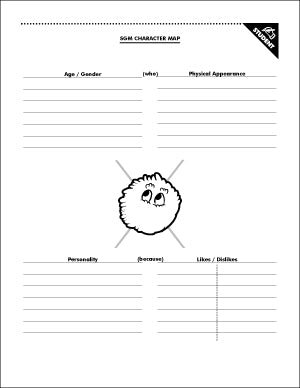Secure Checkout. FREE SHIPPING for Continental U.S. Orders over $60.
Menu
-
- Home
-
About Us
-
The Approach
-
Linking Language & Literacy
-
MindWing Learning
-
Learning Resources
-
SHOP
-
Blog
-
- About MindWing
- Our People
- Contact Us
- Your Account
- Login
-
United States (USD $)

Secure Checkout. FREE SHIPPING for Continental U.S. Orders over $60.
Braidy’s Bag
August 08, 2015
 Do you travel from classroom to classroom teaching Braidy the StoryBraid lessons? Canvas tote bags are very helpful! You can fit Braidy and all the accessories plus the books/activities needed for your lessons in the bag. One teacher used large plastic envelopes and put the book and activity for each class in separate envelopes. Everything fits nicely into the bag. Shown are two of my “Braidy Bags.” The bag shown at the right was made by my kindergarten students. Each child had a part in the “creation” of this bag using his/her thumbprint and paint as part of the design...
Do you travel from classroom to classroom teaching Braidy the StoryBraid lessons? Canvas tote bags are very helpful! You can fit Braidy and all the accessories plus the books/activities needed for your lessons in the bag. One teacher used large plastic envelopes and put the book and activity for each class in separate envelopes. Everything fits nicely into the bag. Shown are two of my “Braidy Bags.” The bag shown at the right was made by my kindergarten students. Each child had a part in the “creation” of this bag using his/her thumbprint and paint as part of the design...

Character and Setting, Fun Activities
July 29, 2015


Are you looking for a quick lesson to reinforce the SGM or Braidy Character Map? Have students each fill out a character map or work with a partner to fill out the map in an interview format: • How old are you? • What best describes how you look? • What are you like as a person? • Are you friendly? • Are you curious? • What do you like (to eat, to do, etc.)? • What don’t you like?...
Character and Setting Collages for End-of-Year and Summer School!!
June 16, 2015
A fun end-of-year activity or summer school activity is making a Character or Setting Collage! You can use old magazines to cut out “Characters.” They may be pictures of celebrities, political figures, community leaders, animals, cartoons or advertisements with people who remind you of characters from children’s literature. Collages can be done individually by using Maps from the Story Grammar Marker® Manual or Braidy the StoryBraid® manual (below) and pasting the magazine clippings right on to the Map...
Technology Tuesday: Vocabulary, Summer Programming, and Story Grammar Marker®!
June 09, 2015 2 Comments
 Some years ago as an SLP in the elementary school setting, I was informed by a colleague of Isabel Beck’s revolutionary approach to targeting vocabulary. In the book Bringing Words to Life: Robust Vocabulary Development, co-written with Margaret McKeown and Linda Kucan, the authors describe a methodology for building vocabulary revolving around key principles...
Some years ago as an SLP in the elementary school setting, I was informed by a colleague of Isabel Beck’s revolutionary approach to targeting vocabulary. In the book Bringing Words to Life: Robust Vocabulary Development, co-written with Margaret McKeown and Linda Kucan, the authors describe a methodology for building vocabulary revolving around key principles...
Looking at Expository Discourse Across the Grade Levels
May 28, 2015
In each of our summer studies posts, we have been looking at recent research articles that may inform your use of Mindwing’s narrative and expository tools as you ease into a new school year. This post will look at a study that examined the expository language of typically developing 5th-9th graders along with their performance on a language elicitation protocol. In this way, the article provided key information about assessment, but also has supportive points for the use of the language structures of ThemeMaker® both in assessment and intervention.
The Rules of the Game: Properties of a Database of Expository Language Samples (Heilmann and Malone, 2014) was written by two researchers working at the university and school district levels, respectively, in order to summarize their efforts at constructing a database to illuminate language skills for this older age group and serve as a clinical basis of comparison. The full article is available via ASHAWire (ASHA’s electronic publications portal) if you are a member.

Ronald Morgan Goes to Bat
May 18, 2015
